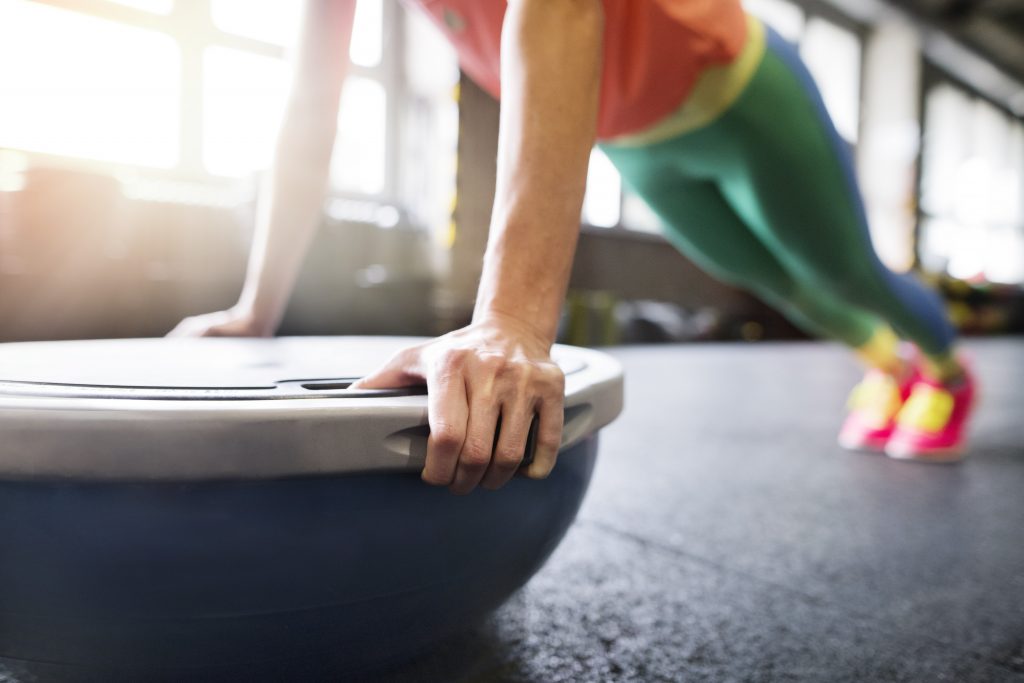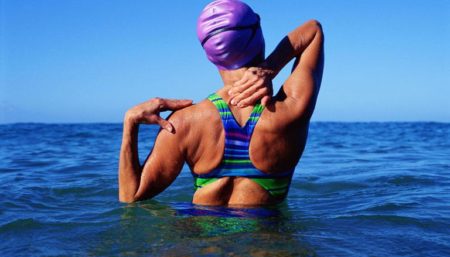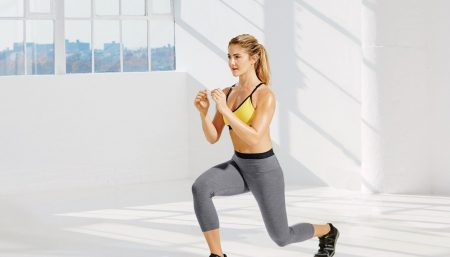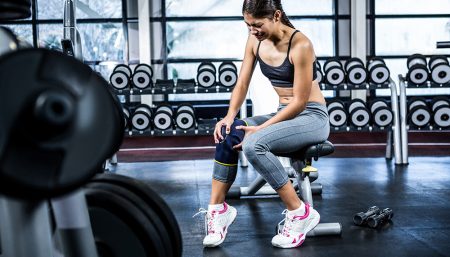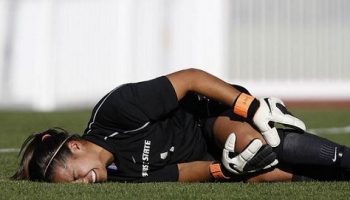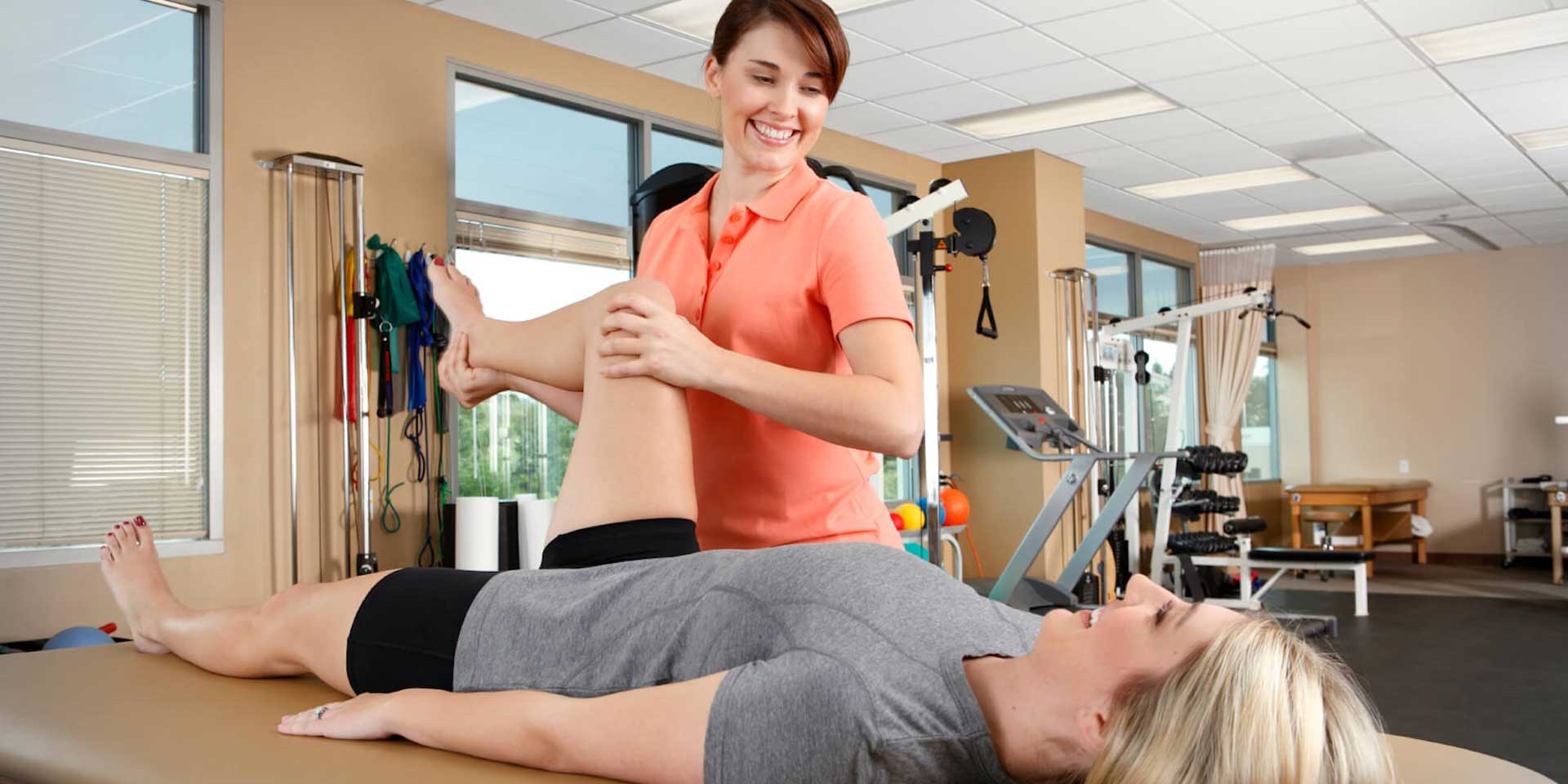
The anterior cruciate ligament (ACL) is a band of dense connective tissue which courses from the femur to the tibia. ACL is a key structure in the knee joint, as it resists anterior tibial translation and rotational loads. Together with the posterior cruciate ligament (PCL), the ACL guides the instantaneous center of rotation of the knee, therefore controlling joint kinematics.
An ACL injury can occur if you:
- Get hit very hard on the side of your knee, such as during a football tackle
- Overextend the knee joint
- Quickly stop moving and change direction while running, landing from a jump, or turning. Basketball, football, soccer, and skiing are common sports linked to ACL tears.
Early symptoms:
|
Once the pain and swelling has subsided the physiotherapist might advice you to perform rehabilitation exercises to gain back strength in and around the knee.
You can do these exercises depending on your physical status. When swelling in your knee has gone down and you are able to stand with equal weight on both legs, you may increase the duration and repititions.
![]() Heel slide: Sit on a firm surface with your legs straight in front of you. Slowly slide the heel of the foot on your injured side toward your buttock by pulling your knee toward your chest as you slide the heel. Return to the starting position. Do 2 sets of 15.
Heel slide: Sit on a firm surface with your legs straight in front of you. Slowly slide the heel of the foot on your injured side toward your buttock by pulling your knee toward your chest as you slide the heel. Return to the starting position. Do 2 sets of 15.
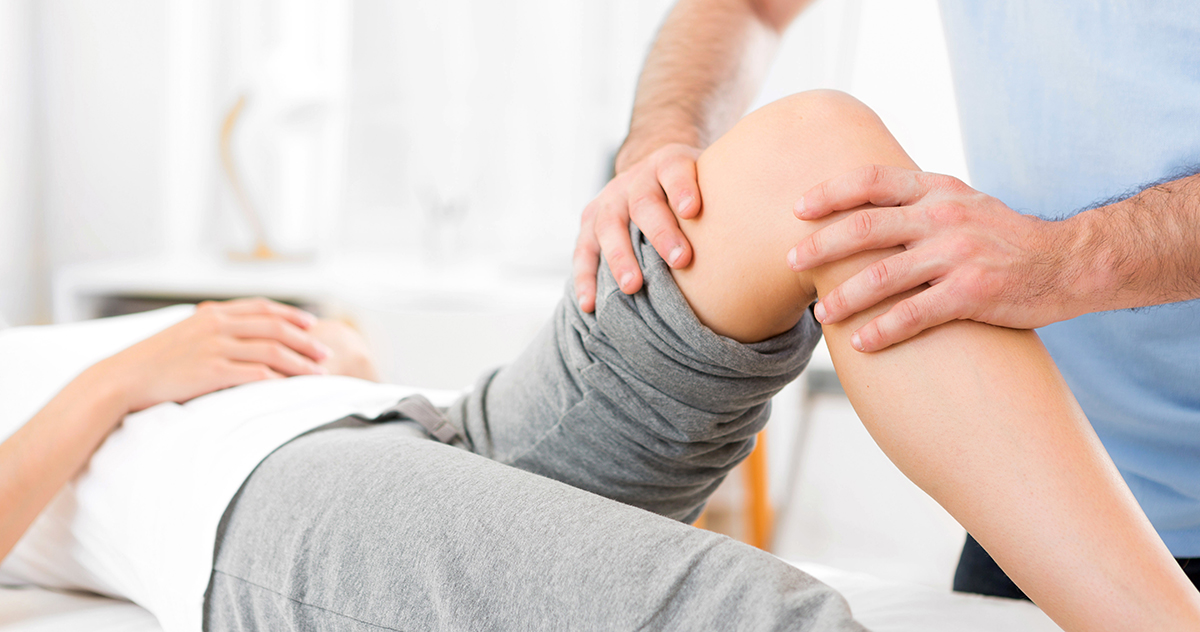
![]()
Quad sets: Sit on the floor with your injured leg straight and your other leg bent. Press the back of the knee of your injured leg against the floor by tightening the muscles on the top of your thigh. Hold this position 10 seconds. Relax. Do 2 sets of 15.
![]() Passive knee extension: Do this exercise if you are unable to extend your knee fully. While lying on your back, place a rolled-up towel under the heel of your injured leg so the heel is about 6 inches off the ground. Relax your leg muscles and let gravity slowly straighten your knee. Try to hold this position for 2 minutes. Repeat 3 times. You may feel some discomfort while doing this exercise. Do the exercise several times a day. This exercise can also be done while sitting in a chair with your heel on another chair or stool.
Passive knee extension: Do this exercise if you are unable to extend your knee fully. While lying on your back, place a rolled-up towel under the heel of your injured leg so the heel is about 6 inches off the ground. Relax your leg muscles and let gravity slowly straighten your knee. Try to hold this position for 2 minutes. Repeat 3 times. You may feel some discomfort while doing this exercise. Do the exercise several times a day. This exercise can also be done while sitting in a chair with your heel on another chair or stool.
![]() Straight leg raise: Lie on your back with your legs straight out in front of you. Bend the knee on your uninjured side and place the foot flat on the floor. Tighten the thigh muscle on your injured side and lift your leg about 8 inches off the floor. Keep your leg straight and your thigh muscle tight. Slowly lower your leg back down to the floor. Do 2 sets of 15.
Straight leg raise: Lie on your back with your legs straight out in front of you. Bend the knee on your uninjured side and place the foot flat on the floor. Tighten the thigh muscle on your injured side and lift your leg about 8 inches off the floor. Keep your leg straight and your thigh muscle tight. Slowly lower your leg back down to the floor. Do 2 sets of 15.
![]()
Wall squat with a ball: Stand with your back, shoulders, and head against a wall. Look straight ahead. Keep your shoulders relaxed and your feet 3 feet (90 centimeters) from the wall and shoulder’s width apart. Place a soccer or basketball-sized ball behind your back. Keeping your back against the wall, slowly squat down to a 45-degree angle. Your thighs will not yet be parallel to the floor. Hold this position for 10 seconds and then slowly slide back up the wall. Repeat 10 times. Build up to 2 sets of 15.
![]() Balance and reach exercises: Stand next to a chair with your injured leg farther from the chair. The chair will provide support if you need it. Stand on the foot of your injured leg and bend your knee slightly. Try to raise the arch of this foot while keeping your big toe on the floor. Keep your foot in this position. With the hand that is farther away from the chair, reach forward in front of you by bending at the waist. Avoid bending your knee any more as you do this. Repeat this 15 times. To make the exercise more challenging, reach farther in front of you. Do 2 sets of 15. While keeping your arch raised, reach the hand that is farther away from the chair across your body toward the chair. The farther you reach, the more challenging the exercise. Do 2 sets of 15.
Balance and reach exercises: Stand next to a chair with your injured leg farther from the chair. The chair will provide support if you need it. Stand on the foot of your injured leg and bend your knee slightly. Try to raise the arch of this foot while keeping your big toe on the floor. Keep your foot in this position. With the hand that is farther away from the chair, reach forward in front of you by bending at the waist. Avoid bending your knee any more as you do this. Repeat this 15 times. To make the exercise more challenging, reach farther in front of you. Do 2 sets of 15. While keeping your arch raised, reach the hand that is farther away from the chair across your body toward the chair. The farther you reach, the more challenging the exercise. Do 2 sets of 15.
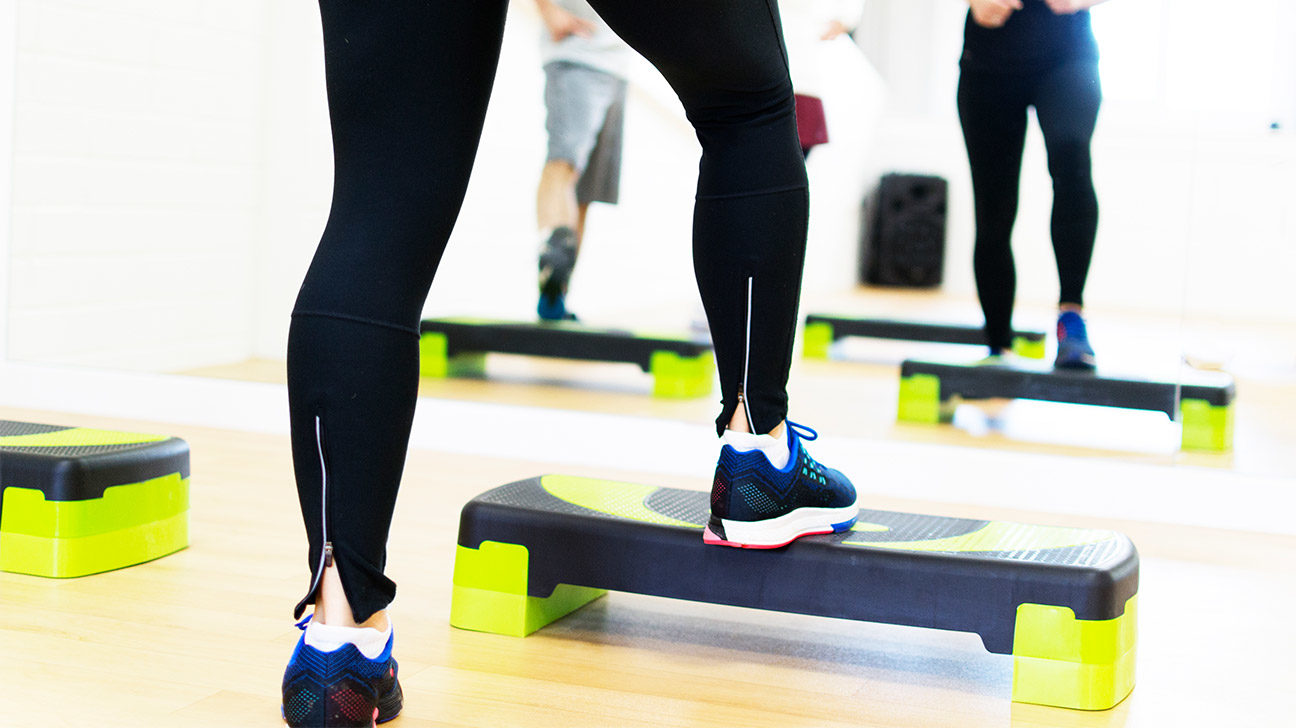
![]()
Step back exercise: Start standing on a small step. Take one leg backwards, touch the foot on the floor and push off with the forefoot to move it back onto the step. Alternate legs. This can be increased indifficulty by performing on a higher step or at a faster speed.
![]() Knee stabilization: Wrap a piece of elastic tubing around the ankle of your uninjured leg. Tie a knot in the other end of the tubing and close it in a door at about ankle height.
Knee stabilization: Wrap a piece of elastic tubing around the ankle of your uninjured leg. Tie a knot in the other end of the tubing and close it in a door at about ankle height.
- Stand facing the door on the leg without tubing (your injured leg) and bend your knee slightly, keeping your thigh muscles tight. Stay in this position while you move the leg with the tubing (the uninjured leg) straight back behind you. Do 2 sets of 15.
- Turn 90 degrees so the leg without tubing is closest to the door. Move the leg with tubing away from your body. Do 2 sets of 15.
- Turn 90 degrees again so your back is to the door. Move the leg with tubing straight out in front of you. Do 2 sets of 15.
- Turn your body 90 degrees again so the leg with tubing is closest to the door. Move the leg with tubing across your body. Do 2 sets of 15.
- Hold onto a chair if you need help balancing. This exercise can be made more challenging by standing on a firm pillow or foam mat while you move the leg with tubing.
![]() Resisted terminal knee extension: Make a loop with a piece of elastic tubing by tying a knot in both ends. Close the knot in a door at knee height. Step into the loop with your injured leg so the tubing is around the back of your knee. Lift the other foot off the ground and hold onto a chair for balance, if needed. Bend the knee with tubing about 45 degrees. Slowly straighten your leg, keeping your thigh muscle tight as you do this. Repeat 15 times. Do 2 sets of 15. If you need an easier way to do this, stand on both legs for better support while you do the exercise.
Resisted terminal knee extension: Make a loop with a piece of elastic tubing by tying a knot in both ends. Close the knot in a door at knee height. Step into the loop with your injured leg so the tubing is around the back of your knee. Lift the other foot off the ground and hold onto a chair for balance, if needed. Bend the knee with tubing about 45 degrees. Slowly straighten your leg, keeping your thigh muscle tight as you do this. Repeat 15 times. Do 2 sets of 15. If you need an easier way to do this, stand on both legs for better support while you do the exercise.
Wobble board exercise: Stand on a wobble board with your feet shoulder-width apart.
- Rock the board forwards and backwards 30 times, then side to side 30 times. Hold on to a chair if you need support.
- Rotate the wobble board around so that the edge of the board is in contact with the floor at all times. Do this 30 times in a clockwise and then a counterclockwise direction.
- Balance on the wobble board for as long as you can without letting the edges touch the floor. Try to do this for 2 minutes without touching the floor.
- Rotate the wobble board in clockwise and counterclockwise circles, but do not let the edge of the board touch the floor.
- When you have mastered the wobble exercises standing on both legs, try repeating them while standing on just your injured leg. After you are able to do these exercises on one leg, try to do them with your eyes closed. Make sure you have something nearby to support you in case you lose your balance.
If you sincerely participate in a rehabilitation program, you may be able to avoid or delay knee surgery by strengthening the muscles in the front (quadriceps) and back of the thigh (hamstrings) that support the knee.
Disclaimer
The Content is not intended to be a substitute for professional medical advice, diagnosis, or treatment. Always seek the advice of your physician or other qualified health provider with any questions you may have regarding a medical condition.
